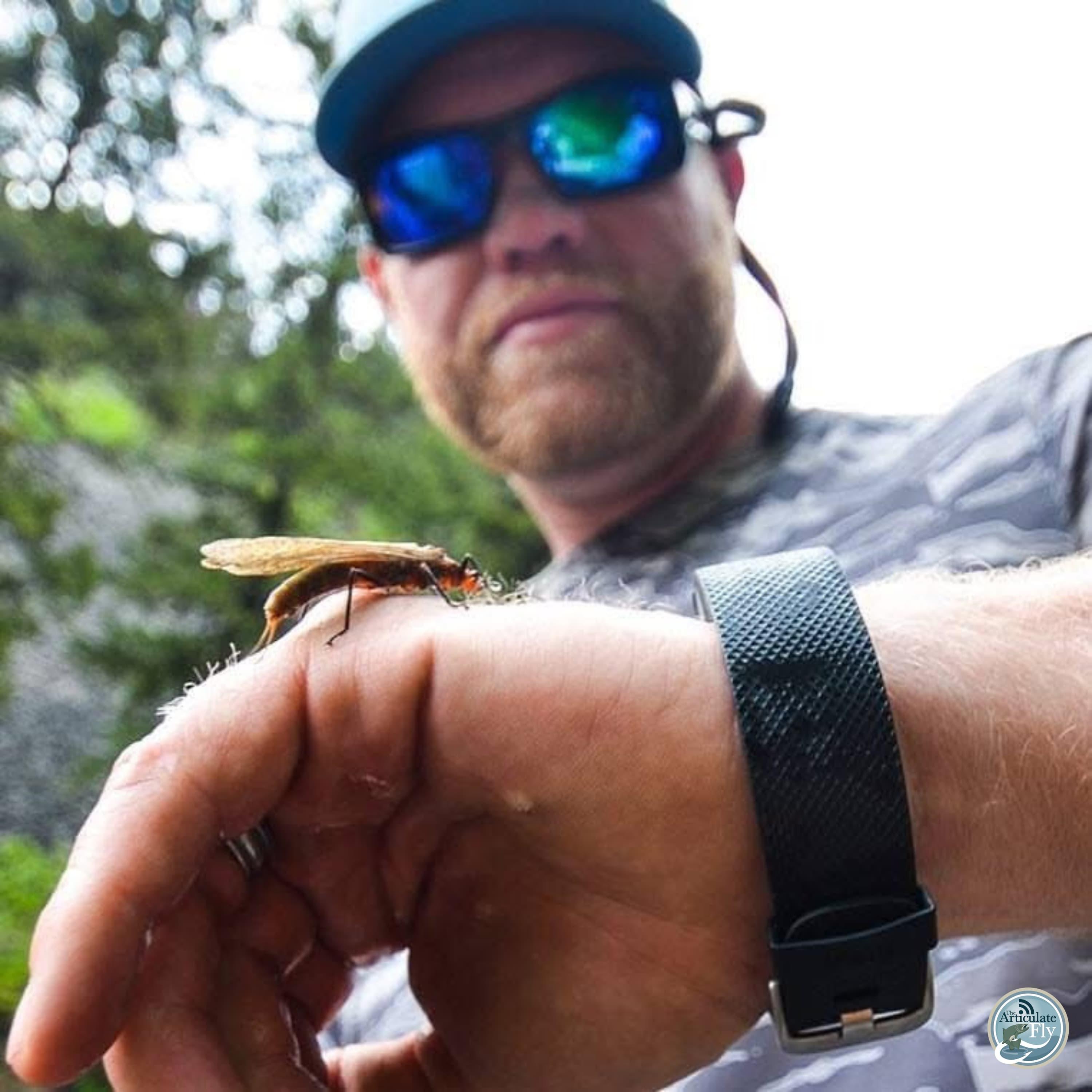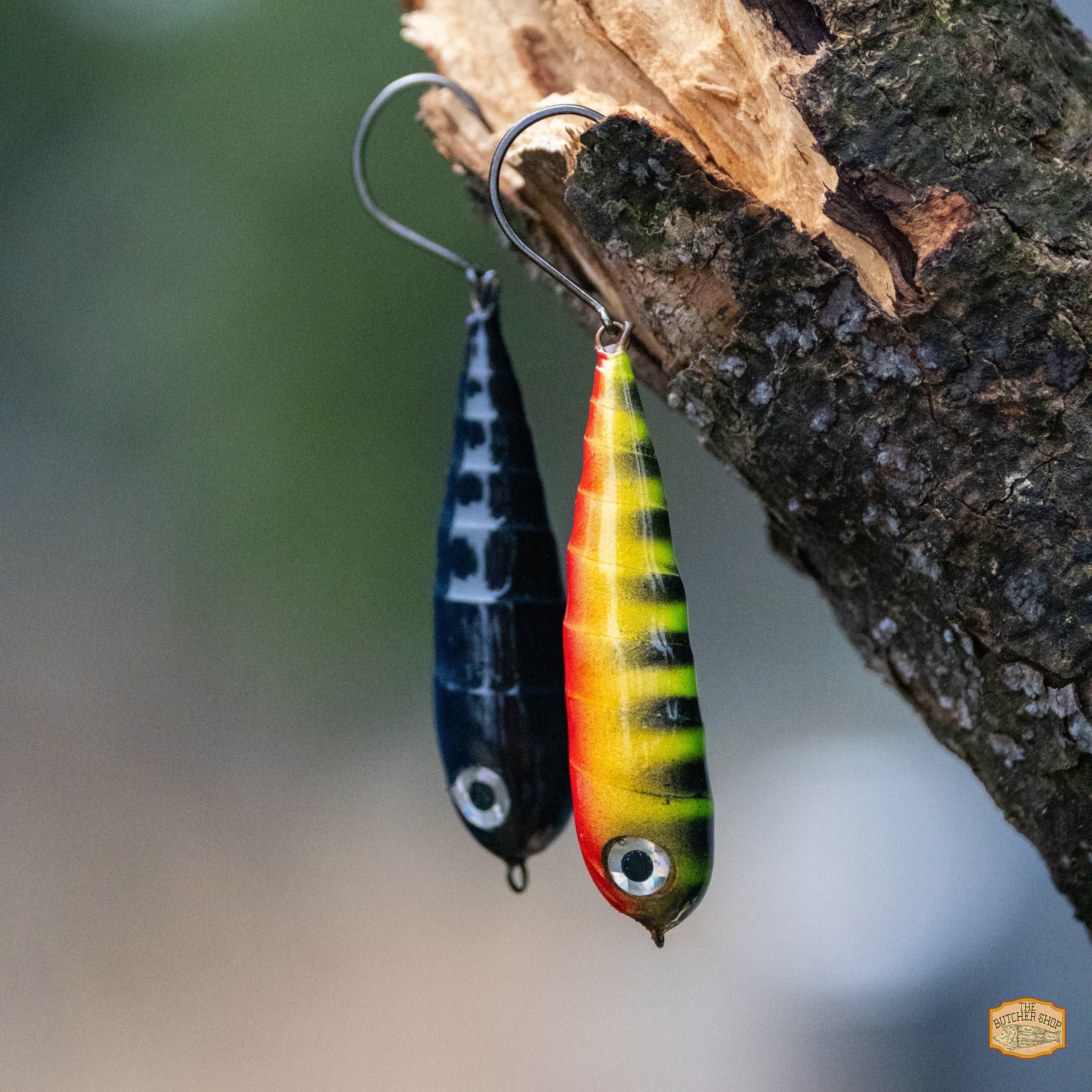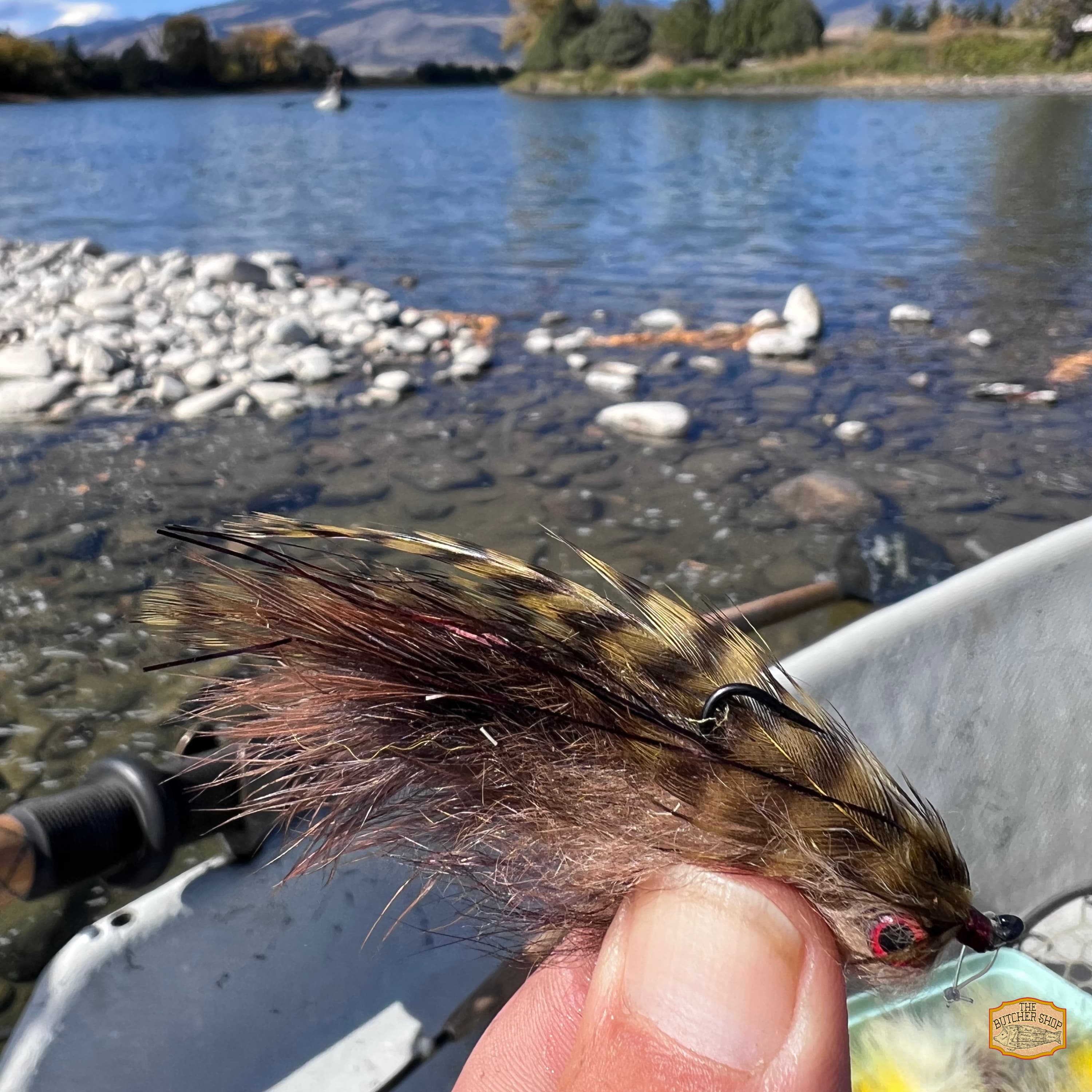S7, Ep 12: Cold Water Chronicles: Insights on Musky Fishing and Streamer Techniques with Matt Reilly
In this episode of The Articulate Fly, host Marvin Cash is back with Matt Reilly for another informative Southwest Virginia Fishing Report. As they navigate the unpredictable weather patterns of the region, Matt shares insights on the fluctuating water temperatures and the impact this has on fish behavior, particularly musky. With recent conditions ranging from frozen rivers to highs in the 60s, the duo discusses how these changes affect fishing strategies and the importance of adapting to tight bite windows.
Matt offers valuable tips for targeting musky in cold water, emphasizing the significance of depth and light conditions when choosing where to fish streamers in the water column. He explains how to balance buoyancy and weight in flies for optimal presentation, ensuring anglers can effectively entice fish even in challenging conditions.
Listeners will also learn about Matt's upcoming availability for pre-spawn smallmouth bass trips and the potential for exciting fishing as spring approaches. Whether you're an experienced angler or just getting started, this episode is filled with practical advice and insights that will help you make the most of your time on the water.
To learn more about Matt, check out our full length interview.
All Things Social Media
Follow us on Facebook, Instagram, Twitter and YouTube.
Support the Show
Subscribe to the Podcast
Subscribe to the podcast in the podcatcher of your choice.
Advertise on the Podcast
Is our community a good fit for your brand? Advertise with us.
In the Industry and Need Help Getting Unstuck?
Check out our consulting options!
Marvin Cash
Hey folks, it's Marvin Cash, the host of the Articulate Fly. We're back with another Southwest Virginia fishing report with Matt Riley. Matt, how are you?
Matt Reilly
I'm doing great, man. How are you?
Marvin Cash
As always, I'm just trying to stay out of trouble and we were talking before we started recording and you know, you're playing weather ping pong in Southwest Virginia.
Matt Reilly
Yeah, and I think I might be losing that game, but it's been, we've been all over the board and I think we're going to continue to be all over the board, you know, in the next week or so.
We've had, you know, week and a half ago we had frozen river and you know, now I'm seeing some like low 40s water temps and you know, highs in the 60s and you know, we'll see, you know, highs in the low 40s in the next day or two and then some 60 degree weather and then they're calling for like four inches of snow and you know, five days or so. So we're, we're all over the board right now, man.
Marvin Cash
Yeah. Which you know, makes the fish funky. And then of course, you know, the. Brings you the W word too, right?
Matt Reilly
Yeah, that's as far as I want to take that.
Marvin Cash
So, you know, when things started to thaw, you know, what are you seeing on the muskie front?
Matt Reilly
Real cold water. You know, when it's, it's kind of interesting how, you know, when you've got cold water temps, it.
A lot of folks want to look for like a real sharp warming, warming trend or something. And they can be good.
But you know, we had a lot of ice and, and snow in the mountains in a lot of places still, you know, a week and a half ago or so. And when it gets real warm real quick, it dumps a lot of cold water. You know, snow and ice melt into the river and kind of buffer that warm up.
I don't think we've seen much of that, but we did fish some, you know, low 30s, mid-30s water temps for a week or so. And usually when we see that, you know, one thing that, that can happen and often happens is the, the bite windows just get really tight.
And so you just have to be real cognizant of where you're spending your time and when not a lot of follows and you know, real like curious kind of activity when it gets that cold typically. But you know, you, you, they, they'll still eat.
And as a, as a muskie fisherman, I'm really not scared of, of really Cold water, they, they can still be very active and, and you could still have some fantastic days. It just changes a little bit and how you have to think about your day.
And you know, like I said, oftentimes, like in the fall when it's warmer, clearer, you know, you can have, you can have days where you move a dozen fish and hook and land one or two when the water temp's 33 degrees. Usually that ratio is a lot, is a lot smaller.
You know, you might, you might move a couple fish and then get a couple eats or you know, move one fish and get a couple eats or, you know, or you might, you know, just miss it entirely and not see anything.
But you tend to see everything just tends to be a little more, you know, isolated, you know, tighter and you know, the fish just tend to be a little more intentional, I guess. You know, they're, they're not just swimming around and checking things out for fun.
You know, if, if you're seeing them moving around, they're usually going to eat something. I like to think.
Marvin Cash
Yeah, well, there you go. It's always good to be optimistic. And got a, got a question for you from Brenner and it's a, it's a streamer question.
He wanted to kind of get your thoughts on, you know, how you decide where you want to fish your streamers in the water column. Like how you decide between mid column and maybe upper water column.
Matt Reilly
Yeah, I mean, I'll, I'll sort of talk about it in a musky context because that's where my, my brain is at the moment.
One thing that, you know, jumps out really quickly is, you know, I don't, I don't think it's a bad thing to fish near the bottom when you're musky fishing all the time. You know, the lower third of the water column or so. You don't have to be on the bottom. You certainly don't have to be on the bottom.
And there's lots of times where, you know, you can, you can move a fish in a, in a nine foot hole.
Fishing a fly that's two feet under the water, you know, it's, it's not a necessity all the time, but being down in the lower third of the water column where pretty much all the, the food and the life is when the water's cold is, is never a bad idea.
But outside of that, another thing that comes to mind pretty quickly, largely because of my day to day and, and some of my days in the last week, ambient light I think has a Lot to do with it. Ambient light as it relates to how lit up the water column is and how much sort of COVID veil the predatory fish have at their disposal.
As, as it relates to that. On really bright days, especially when the water's clear, I want to be fairly deep just because, you know, clear water, not a lot of secrets.
More light penetration you have, you know, the, the, you know, the more lit up the water column is. I think a lot of times muskies use depth as, as ambush cover.
It's, it's darker down there and they can, you know, a lot of times they eat above their head, so they're, they're sort of tracking food from a darker, deeper location and coming up to eel. A lot of times on real dark days, I don't necessarily find that as necessary. But if we're fishing on a real bright day, not much is going on.
That's going to be, you know, one of the first adjustments I make is just making sure that we're, you know, sinking lines down and you know, getting flies in that lower third for sure. And yeah, I mean that's, that's this. There's probably some other, other ways you could take that, but that's sort of my initial reaction.
I don't think it needs to be much more complicated than that.
Marvin Cash
Got it. And then just kind of a follow up, you know.
Do you generally prefer, you know, when you need weight to get it in the line and leave the fly relatively unweighted or do you, are there instances where you like to put more weight in the bug?
Matt Reilly
Yeah, that's a, that's a good question. I mean, I, yes, especially this time of year, hang time is a big deal.
And as it relates to fly fishing, you get hang time with buoyancy and you counteract that with density in a line.
So yeah, I don't want anything that's going to sink real fast because of its own weight unless you're planning on basically like bottom crawling, which is also a, A, a legitimate option. But generally speaking, I'm, I'm going to be sticking with my standard, you know, fairly buoyant or neutrally. Neutrally buoyant.
You know, bucktail flies or you know, some synthetic flies with, with different buoyant materials built into them and just sink, sinking that fly down and, and fishing it in the lower part of the water column and that just, it allows you to get the fly down there, but you can, you can still pause it, you know, give it long pauses and, and let the materials work in the, in the Current and you know, do their thing to entice a fish to snap it without, you know, having to worry about like, how, how fast is my fly sinking to the bottom? I don't want to get snagged. You know, I have to move it at a certain speed. So, so yeah, I'm gonna.
And I, I carry different, different lines for, you know, those exact scenarios. You know, I'm a big fan of the, the triple density SA lines. And so, you know, in my musky fly line spool arsenal, I've got a couple intermediates.
I've got some intermediate two, you know, I 35s, 357s that, that just allows you to really sort of fine tune your presentation there.
And you know, again, you just never want to be worried about, you know, my fly getting to the bottom too quickly or, you know, I've got to sit here and count this line down 20 seconds to get it in the lower part of the column in eight feet of water, you know, so having the right tool for the job there is definitely a big deal.
Marvin Cash
Got it. And you know, folks, we love questions on the articulate fly. You can email them to us or DM us on social media, whatever is easiest for you.
And if we use your question, I will send you some articulate fly swag and we'll enter your drawing for some cool stuff for Matt at the end of the season.
And you know, Matt, before I let you go, you know, I know it's been kind of crazy and you're on the yo yo right now and you know, we're going to know that there's the, the W word is going to be around a lot, particularly in the margin of Virginia. But that also means that you're getting closer to pre spawn smallmouth bass. You want to let folks kind of know what you have available.
I know you're probably booking into the summer and probably even a little bit into the following year for muskie, right?
Matt Reilly
Yeah, definitely. Already talking some, some musky dates for next fall. Some, some of that's because how brutal January was.
It pushed some dates out till next season, but I have already booked some of those days. But as far as sort of the, the spring summer, I do have a couple of pre spawn days left in March here and there.
I think there's two or three, couple of, couple of spring striper slots open.
And then as far as the summer goes, man, it's, it's fairly sparse, but I think I've got a couple in July and then there's, you know, a Couple maybe a week of days. And in early October, kind of our last sort of my last hurrah. The main, main smallmouth season.
And depending on the, that, that first early part of October can, can go a couple different ways.
You know, if we get a, get a hurricane like we did this past year and there's some water in the river, there can be some pretty fantastic streamer fishing that time of year or some bigger fish that are, you know, kind of in a, in a, an instinct driven, you know, winter bulk up mode and, and on dry warm years we can have some pretty good top water smallmouth fishing into, into early October. So that's pretty much what I've got.
As always, you know, if you're interested in anything, talking fishing or whatever, you know, just, just reach out whenever and we'll, we'll figure something out.
Marvin Cash
Yeah, it's funny, I think that October is a little bit more my speed. I've kind of had my fill of that dry heat of Virginia in August.
Matt Reilly
Yeah, man, this, this last summer was definitely a bruiser. It, I, I, I don't know what you call the weather pattern we're in right now, but we had a pretty dang hot dry summer and pretty wet cold winter.
So hopefully that means we have a fairly slow, you know, natural spring. But these 70 degree days in January, early February are kind of freaking me out.
Marvin Cash
Yeah, it doesn't bode well. Well listen folks, as I always say, you know, if it's warm enough for you to get out and fish, you should go do that.
And if it's not, I would encourage you to sit down at the bison, tie a few bugs or you know, if you've got a fly fishing show come into your. Check it, check it out. Tight lines everybody. Tight lines. Matt.
Matt Reilly
Thanks, Marvin.

Matt Reilly
Guide | Fly Tier | Outdoor Writer
Matt grew up stomping around the warm water creeks and rivers of his native central Virginia, just a stone's throw from the James River. He's been blessed with a great many mentors, including his father, who introduced him to fishing before the age of two.
In his teenage years, Matt took his first professional venture into the outdoor industry as a freelance writer and photographer, and soon secured a weekly outdoor column in The Daily Progress' Rural Virginian.
After heading south for college and falling in love with the fisheries of southwest Virginia, Matt established his guide service in 2018. Today, he is a father, husband, USCG-licensed captain, and a leading fishing guide specializing in smallmouth bass, musky, and other predatory game fish. He speaks regularly on a range of topics. His writing has appeared in several national and regional publications like Eastern Fly Fishing, American Angler, Fly Tyer, Southern Trout, Hatch Magazine, and Virginia Wildlife. He is also an ambassador for Reilly Rod Crafters, a producer of premium fly rods based in Virginia.











